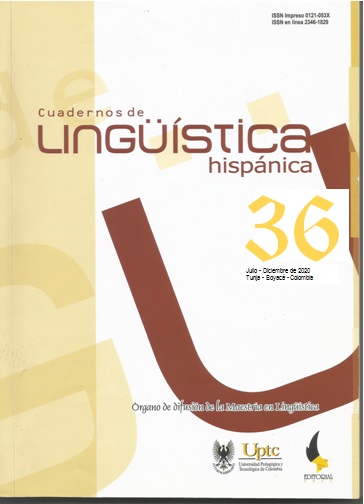Multilingualismo e acultura em Catalonia: uma análise comparativa de mulheres imigrantes muçulmanas da primeira e segunda geração

Résumé
Owing to the continuous influx of immigration in Catalonia, multilingualism has become the bedrock of this region. Still, Catalan and Spanish remain the dominant languages of everyday communication and immigrants are faced with the challenge of adopting both Spanish and Catalan linguistic identities. This dual acculturation process can span across generations and can be impacted by a variety of sociocultural factors. Additionally, motivation to acculturate can be rooted in individuals’ own complex identities that are constructed in different sociocultural contexts, a connection that Norton (2000) has conceptualized as “investment.” This study examines Muslim immigrant women’s investment in Spanish and Catalan, as well as the sociocultural factors that play a role in this investment. The present study relies on data gathered from 34 Muslim immigrant women from diverse geographic backgrounds. Findings indicate that a variety of factors impact informants’ relationship with their linguistic identities, often in disparate ways. Furthermore, first and second-generation informants presented distinct experiences with acculturation, suggesting that it is a transgenerational process. Finally, informants’ responses also suggest that their linguistic investment is informed by their gendered and religious identity.
Mots-clés
Multilingualism, acculturation, migrant communities, Spanish, Catalan
Références
Ali, F. (in press). Identity and investment in language learning: a case study of heritage
Spanish speakers. Spanish in Context.
Ali, F. (2019). Language Attitudes among Muslim Women in Barcelona. (Unpublished
doctoral dissertation). University at Albany, SUNY. Albany, NY.
Block, D. (2014). Social class and applied linguistics. Oxon, UK: Routledge.
Cortès-Colomé, M., Barrieras, M., Comellas, P. (2016). Changes in immigrant
individuals’ language attitudes through contact with Catalan: the mirror effect.
Language Awareness, 25(4), 272-289.
Darvin, R. & Norton, B. (2015). Identity and a Model of Investment in Applied Linguistics
Annual Review of Applied Linguistics, 35, 36–56.
Estors Sastre, L. (2014). Les Actituds lingüístiques segons l'origen dels aprenents de
català com a llengua d'acollida. Treballs de Sociolingüística Catalana, 24, 153-
171.
Fukuda, M. (2017). Language use in the context of double minority: the case of
Japanese-Catalan/Spanish families in Catalonia. International Journal of
Multilingualism, 14(4), 401-418.
Gore, S. (2002). The Catalan language and immigrants from outside the European
Union. International Journal of Iberian Studies, 15(2), 91-102.
Haneda, M. (2005). Investing in foreign-language writing: A study of two multicultural
learners. Journal of Language, Identity, and Education, 4(4), 269–290.
Higgins, C. (Ed.). (2011). Identity formation in globalizing contexts: Language learning in
the new millennium (Vol. 1). Berlin, Germany: Walter de Gruyter.
Huguet, À. & Janés, J. (2008). Mother tongue as a determining variable in language
attitudes. The case of immigrant Latin American students in Spain. International
Journal of Bilingual Education and Bilingualism, 8(4), 247-260.
Kamada, L. (2010). Hybrid identities and adolescent girls. Bristol, UK: Multilingual
Matters.
Marshall, S. (2007). New Latino Diaspora and New Zones of Language Contact: A
Social Constructionist Analysis of Spanish Speaking Latin Americans in
Catalonia. In Selected Proceedings of the Third Workshop on Spanish
Sociolinguistics, ed. Jonathan Holmquist, Augusto Lorenzino, and Lotfi Sayahi,
150-161. Somerville, MA: Cascadilla Proceedings Project. www.lingref.com,
document #1536.
Menard-Warwick, J. (2009). Gendered identities and immigrant language learning.
Bristol, UK: Multilingual Matters.
Norton, B. (2000). Identity and language learning: Gender, ethnicity and educational
change. Essex: Pearson.
Norton, B. (2013). Identity and language learning: Extending the conversation (2nd ed.).
Bristol, UK: Multilingual Matters.
Potowski, K. (2004). Student Spanish use and investment in a dual immersion
classroom: Implications for second language acquisition and heritage language
maintenance. The Modern Language Journal, 88(1), 75–101.
Pujolar, J. (2009). Immigration and language education in Catalonia: Between national
and social agendas. Linguistics and Education, 21, 229-243.
Schumann, J. (1978). The pidginization process: a model for second language
acquisition. Rowley, Mass: Newbury House Publishers.
Schumann, J. (1986). Research on the acculturation model for second language
acquisition. Journal of Multilingual and Multicultural Development, 7, 379-392.
Skilton-Sylvester, E. (2002). Should I stay or should I go? Investigating Cambodian
women’s participation and investment in adult ESL programs. Adult Education Quarterly, 53(1), 9–26.
Trenchs-Parera, M., Newman, M. (2009). Diversity of language ideologies in two
generations of Spanish-speaking youth of immigrant origin in Catalonia. Journal
of Multilingual and Multicultural Development, 30(6), 509-524.
Woolard, K. (1989). Double Talk: Bilingualism and the Politics of Ethnicity in Catalonia.
Stanford University Press.
